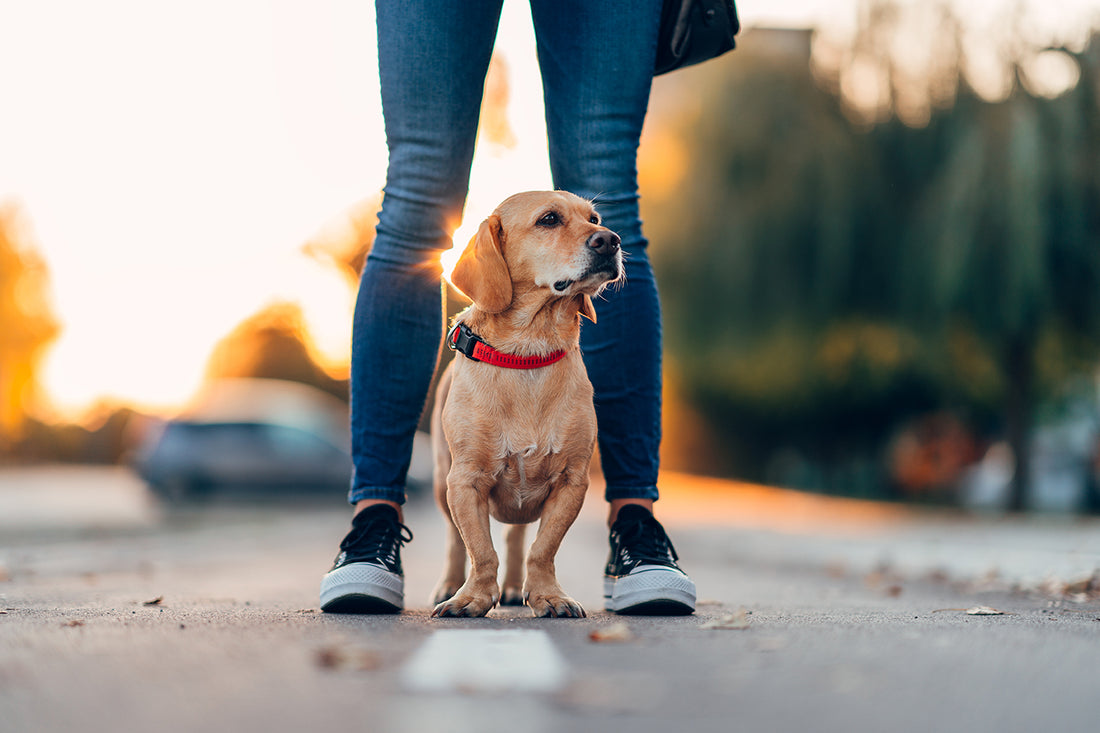Lapses In Judgment In the Social Media Era
There exists on the interwebs a 10hr video of paint drying. You may not have seen it in its entirety. It's ok. Stick with me. The video is available on YouTube exclusively. You won't find it on any social media sites because they limit videos to 59 seconds. At least for business accounts. That's about the max time consumers will spend watching anything on their feed.
If we post dog training videos, the length of attention we can hold is more like 14 seconds if it's unedited footage but I've learned I can maintain longer focus through a number of editing tricks involving moving parts on the screen that keep the viewer's gaze. Sometimes that helps keep you captivated for the full duration. Mostly though, the shorter the better visibility-wise. At least on social media platforms.
Unless… Unless! The # of clicks is prioritized over the dog's wellbeing. Then you can skip over all that pesky and time-consuming editing because your footage is action packed excitement!!!!!!!! Sigh.
Sadly, the latter is what most well-intentioned dog lovers think quality training is, but quality training is on par with watching paint dry. It's not flashy. It's not action packed. Unless you're a behavior geek, it's an utter snoozefest.
Viewers crave drama!
If these both were captioned, "Watch me fix this dangerous dog's behavior" you'd certainly be more enticed by the dog's flashy displays of teeth than that little dude calmly watching but the calm dog is what a trainer should be striving for. At all times. We never want to see the face on the left.

But what about those hot shots that work with Red Zone Dogs?
What are these "ReD zOne DoGs" that content-driven trainers work with? This is just a flashy label used to describe upset dogs created with the intent to draw in your clicks. It's marketing lingo. Most of us in the field just recognize them as dogs that are afflicted with a disregulated nervous system. The flashiness comes when the content-driven trainer puts their ineptitude on display for the world to see.

("Even though I charge money for my services and claim to be a professional, I'm so clueless about dogs that I'm sticking my hands in this one's face which I may or may not realize upsets him.")
What does an Upset Dog look like?
A dog with behavioral challenges is most likely in a chronic state of stress. They tend to respond disproportionately to everyday events, people, dogs, or situations. They have Big Feelings. A Lot. They might flash their teeth in self defense when they're scared or make a big scene with their voice and body language to make something they're scared of go away. Disproportionate defined for use in this article meaning the behavior is outside of what is safe.
For all dogs, and really any living organism, it's normal to have Big Feelings from time to time. Nobody makes it through this life without experiencing stress or fear or anger at least sometimes. In raising dogs we should do as much prevention on this as we can, sometimes this happens through selective breeding for temperament (we love it when this happens), and most often in the puppy's critical window through a process called socialization. The safer dogs feel the safer they are to live with. Feeling safe makes for a better quality of life for all. You might even understand this from your own life experience!
Besides prevention, we also have protocols in place to settle the nervous system after an incident to decrease odds of long term damage to the dog's emotional well-being.
Unfortunately for some dogs, even with all these best practices on board, fear can develop. When there aren't measures in place to prevent repeated exposures, or recovery strategies at play when the dog inevitably encounters something stressful, disregulation can become chronic. Not only are there health implications linked to this, for the families who love these dogs, they need to address it or their beloved companions become a walking liability.

(If you think training is expensive, think about a lawsuit!)
True Professionals
In the real world, when professional trainers evaluate a dog in crisis, they take a behavioral history from the dog's guardian, establish management guidelines which are important to prevent the dog from rehearsing the behavior we are seeking to change (basically preventing further disregulation, and affording the dog the ability to get back to their baseline state behaviorally) which stays in place throughout the behavior modification process. We provide instruction on what to do should the dog experience a stressful event to help them recover with as minimal additional damage as possible, and finally, we go about modifying the behavior. In everything we do, we strive to prevent the dog from getting disregulated again. No, you can't prevent everything. Yes, you should still strive to during this process.
The goal -- modified observable behavior in these cases; is actually a pleasant side effect of our real work, which lies in changing a dog's internal emotional response that they currently associate with their triggers. What we see on the outside is a reflection of what they feel on the inside.
When we're working through a behavior modification plan, they are exposed to the things that scared them, but because we need to prevent disregulation, we do so at a distance the dog still feels safe. In other words, they see the trigger at such a low intensity, it does not cause an elaborate response. We follow the appearance of the trigger with an innately good experience for the dog. Over time, the dog comes to see the trigger as a predictor of a good outcome and their emotional state shifts in a positive direction. We then get to inch closer to the trigger and repeat the process. Then we do it again, then again… The goal is that the dog eventually feels safe in a reasonable proximity to their trigger. Alternately, they might be taught a response that feels less yucky emotionally that replaces their old one. It works because no animal likes to feel upset, so this becomes their go-to. Ultimately, they should feel relatively calm throughout if you play your cards right.

("Thank goodness my person hired a real professional.")
This might mean that a dog who flipped out when seeing a dog 200ft away learns that passing dogs at 6ft is a safe endeavor. Does it mean that if accosted by an off leash dog they won't react? We walk by people all the time, but if one randomly tackles us, would you respond defensively? Yeah. That's normal. It's normal for them too.
This leaves ethical trainers in an awful predicament because high quality behavior modification in the social media realm is not what gets clicks.
In the ethical realm:
- there is no flashy blowup from the dog on video because the ethical trainer prevented it.
- There is then no contrast clip for before and after effect because the before video didn't exist because it would have required the ethical trainer to act unethically by forcing the dog into a state of reactivity.
- The dog looks pretty freakin' calm throughout. We know the behavior exists because of our intake process, but for online content, often our narrating this instead of showing the dog flailing makes people upset because they're not used to good training.
So please, ask yourself…
When online "aggression expert" hacks do this for clicks, where is their regard for the dog's emotional state? And worse, why do they so often deem the dog fixed when often all they do is suppress the external response through more fear? There's a consistent lack of care for the dog's mental health. Have you no idea what the outcome of domestic violence is? What it does to a being? It's the same for dogs at the hands of some of these folks. Many of these dogs aren't ok. They're hypervigilant, they experience chronic stress and anxiety and health issues as fallout. Oh! But they aren't barking and lunging anymore! Well that domestic violence victim stopped fighting back, or stopped screaming in the presence of their threats, are they doing ok emotionally? Come on.
What online consumers are watching on social media is often very awful training. Things that keep us up at night. Since this is all they see, they place these hacks on a pedestal and mistakenly harass skilled trainers who speak out against them.
"WeLL tHeN sHoW uS yOuR wOrK wItH rEd ZoNe DoGs!!!"
If we post clips where we rightly aren't placing dogs in a state of stress, they accuse us of not taking on serious behavioral cases because we did the right thing and prevented the outburst.
Dog lovers are falling under the spell of garbage content created for clicks online because they don't prevent showy blow ups. They are literally setting dogs up for failure in pursuit of increased clicks. Ethical trainers are being attacked for doing right by the dog.
I don't know how to fix this. I guess this is an attempt at awareness.
Please, before you make critiques or dole out accolcades, take some time to learn the extensive ways dogs communicate through body language. Dogs don't lie, and they'll tell you if you watch the footage what is happening to them.

